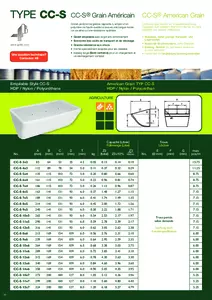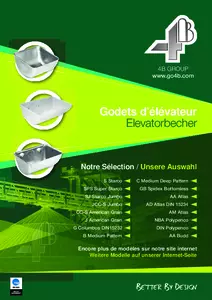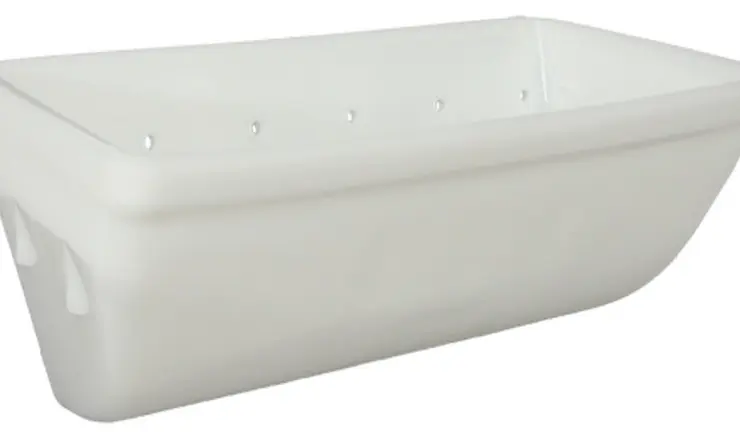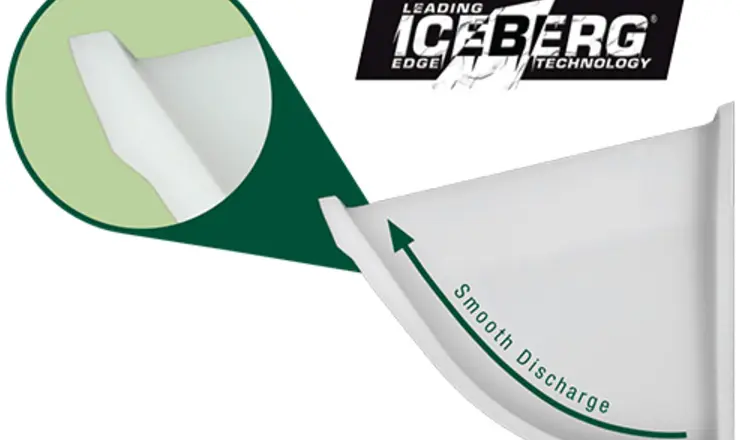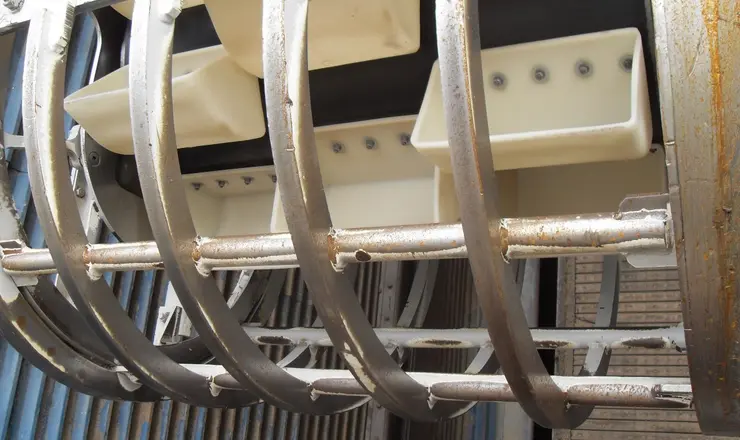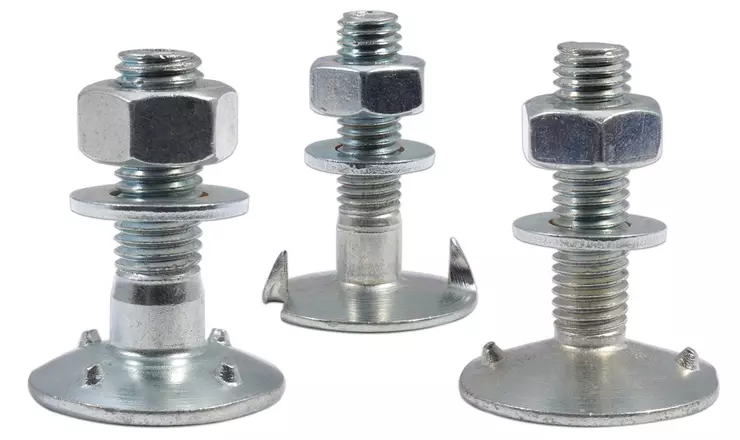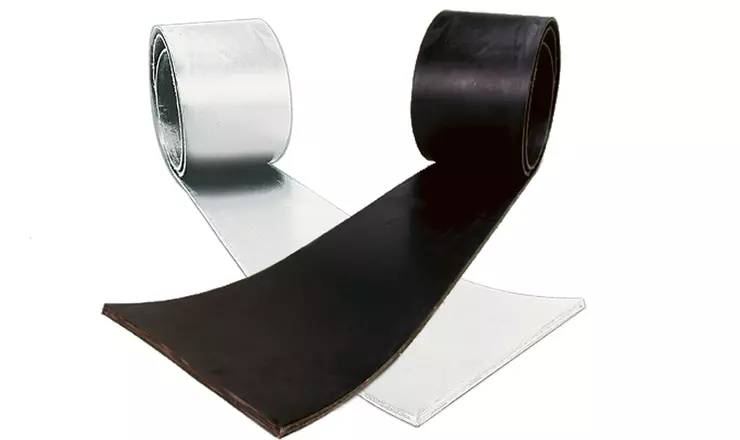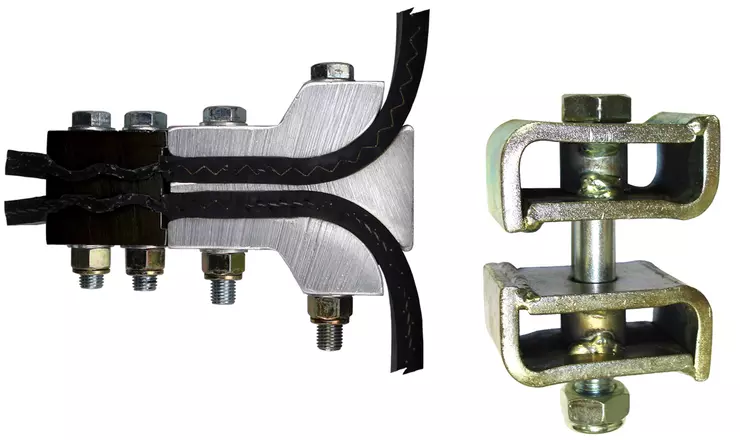Godets CC-S
Godets d'élévateur empilables
Godet profond de grande capacité. L’emploi d’un polymère de haute qualité lui assure une longue durée de vie ainsi qu’une résistance optimale.
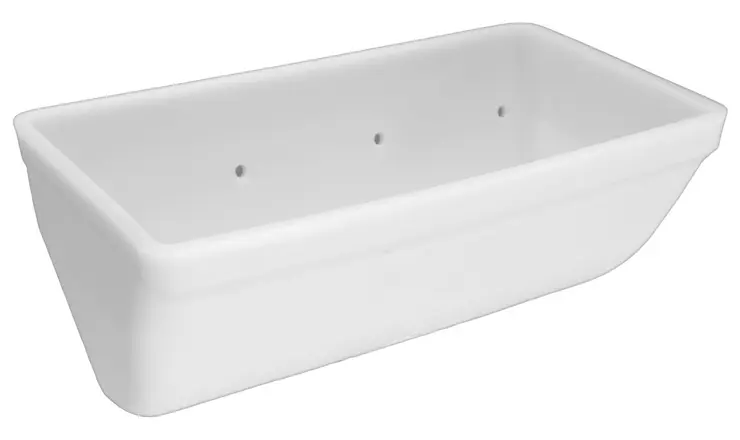
Product Features
- Godet identique au godet "J"
- Godet empilable avec ergots anti-enfoncement réduisant de 50% le volume de stockage
- Bord renforcé pour une plus longue durée de vie et un meilleur déchargement
- Fabriqué en PEHD haute qualité
Material
HDP,
Nylon,
Polyuréthane
Use by Industry
Agriculture
Use by Product
Céréales,
Pellets & Produits légers
Specifications

| CC-S Bucket | A | B | C | D | T | weight | capacity | capacity | capacity | Max | |
| (mm) | (mm) | (mm) | (mm) | (mm) | kg | Z2 (total) | Z3 +10% | Z3 (water) | Pcs/Mtr | ||
| 3x2 | 85 | 64 | 53 | 35 | 4.5 | 0.05 | 0.13 | 0.14 | 0.1 | 15.75 | |
| 4x3 | 112 | 89 | 78 | 54 | 5 | 0.11 | 0.37 | 0.32 | 0.29 | 11.25 | |
| 5x4 | 135 | 115 | 103 | 72 | 5 | 0.2 | 0.8 | 0.66 | 0.6 | 8.75 | |
| 6x4 | 161 | 115 | 103 | 72 | 5 | 0.23 | 0.96 | 0.81 | 0.74 | 8.75 | |
| 7x4 | 186 | 115 | 103 | 72 | 5 | 0.26 | 1.13 | 0.96 | 0.87 | 8.75 | |
| 6x5 | 163 | 141 | 131 | 93 | 6 | 0.37 | 1.48 | 1.27 | 1.15 | 7.15 | |
| 7x5 | 189 | 141 | 131 | 93 | 6 | 0.41 | 1.74 | 1.49 | 1.35 | 7.15 | |
| 8x5 | 214 | 141 | 131 | 93 | 6 | 0.45 | 2 | 1.72 | 1.56 | 7.15 | |
| 9x5 | 240 | 141 | 131 | 93 | 6 | 0.5 | 2.22 | 1.88 | 1.71 | 7.15 | |
| 10x5 | 265 | 141 | 131 | 93 | 6 | 0.54 | 2.53 | 2.17 | 1.97 | 7.15 | |
| 11x5 | 290 | 141 | 131 | 93 | 6 | 0.59 | 2.78 | 2.39 | 2.17 | 7.15 | |
| 12x5 | 316 | 141 | 131 | 93 | 6 | 0.62 | 3.05 | 2.62 | 2.38 | 7.15 | |
| 8x6 | 213 | 171 | 154 | 105 | 6 | 0.56 | 2.76 | 2.31 | 2.1 | 6.00 | |
| 9x6 | 239 | 171 | 154 | 105 | 6 | 0.64 | 2.95 | 2.59 | 2.35 | 6.00 | |
| 10x6 | 264 | 171 | 154 | 105 | 6 | 0.68 | 3.38 | 3.03 | 2.75 | 6.00 | |
| 11x6 | 289 | 171 | 154 | 105 | 6 | 0.72 | 3.85 | 3.41 | 3.1 | 6.00 | |
| 12x6 | 315 | 171 | 154 | 105 | 6 | 0.78 | 4.3 | 3.63 | 3.3 | 6.00 | |
| 13x6 | 340 | 171 | 154 | 105 | 6 | 0.84 | 4.6 | 3.96 | 3.6 | 6.00 | |
| 14x6 | 358 | 171 | 154 | 105 | 6 | 0.9 | 5.05 | 4.35 | 3.95 | 6.00 | |
| 10x7 | 273 | 200 | 180 | 127 | 8 | 1.05 | 5.12 | 4.36 | 3.96 | 5.25 | |
| 11x7 | 299 | 200 | 180 | 127 | 8 | 1.1 | 5.6 | 4.8 | 4.4 | 5.25 | |
| 12x7 | 324 | 200 | 180 | 127 | 8 | 1.2 | 6.18 | 5.27 | 4.79 | 5.25 | |
| 13x7 | 350 | 200 | 180 | 127 | 8 | 1.28 | 6.71 | 5.72 | 5.2 | 5.25 | |
| 14x7 | 375 | 200 | 180 | 127 | 8 | 1.37 | 7.25 | 6.18 | 5.62 | 5.25 | |
| 15x7 | 400 | 200 | 180 | 127 | 8 | 1.45 | 7.76 | 6.63 | 6.03 | 5.25 | |
| 16x7 | 426 | 200 | 180 | 127 | 8 | 1.53 | 8.3 | 7.08 | 6.44 | 5.25 | |
| 10x8 | 275 | 228 | 210 | 149 | 10 | 1.44 | 6.66 | 5.71 | 5.19 | 4.60 | |
| 11x8 | 300 | 228 | 210 | 149 | 10 | 1.55 | 7.35 | 6.3 | 5.73 | 4.60 | |
| 12x8 | 326 | 228 | 210 | 149 | 10 | 1.66 | 8.07 | 6.92 | 6.29 | 4.60 | |
| 13x8 | 351 | 228 | 210 | 149 | 10 | 1.76 | 8.75 | 7.51 | 6.83 | 4.60 | |
| 14x8 | 377 | 228 | 210 | 149 | 10 | 1.88 | 9.47 | 8.14 | 7.4 | 4.60 | |
| 15x8 | 402 | 228 | 210 | 149 | 10 | 1.97 | 10.16 | 8.73 | 7.94 | 4.60 | |
| 16x8 | 427 | 228 | 210 | 149 | 10 | 2.05 | 10.85 | 9.33 | 8.48 | 4.60 | |
| 18x8 | 479 | 228 | 210 | 149 | 10 | 2.3 | 12.28 | 10.57 | 9.61 | 4.60 | |
| 20x8 | 529 | 228 | 210 | 149 | 10 | 2.5 | 13.65 | 11.77 | 10.7 | 4.60 | |
Trous percés selon demande.


